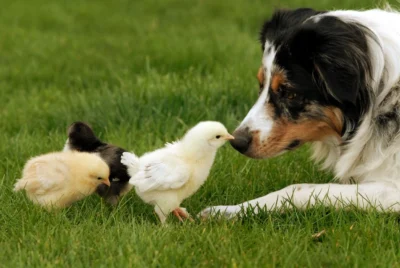The Ultimate Guide to Using Hemp Bedding For Chickens
For every dedicated chicken keeper, the relentless quest to find the perfect bedding solution can often feel like an uphill battle. Traditional beddings, though popular, come with a slew of issues: from unpleasant odors to frequent replacements and concerns about the environmental impact. If these challenges resonate with you, you’re not alone.
Many poultry enthusiasts are on the lookout for better, more sustainable options. In this guide, I will discuss deep into this eco-friendly alternative hem bedding, unraveling its benefits and how it can transform your chicken-keeping experience.
What Is Hemp Bedding?
Hemp bedding is a type of animal bedding produced from the inner soft part of the hemp plant, often called the hurd. This core is processed and broken down into small, absorbent pieces that can be spread across the floor of animal enclosures, such as for horses, chickens, rodents, and other pets. Hemp bedding is known for its superior absorbency, up to four times that of straw or wood shavings. This characteristic helps to reduce odors by effectively trapping ammonia from animal waste.
Additionally, hemp bedding is naturally resistant to mold and bacteria, biodegradable, and less dusty than other types of bedding, making it a healthier choice for animals and their caretakers. As a renewable resource, hemp is also environmentally friendly, and its cultivation requires minimal pesticides or herbicides.
Is Hemp Bedding Safe for Chickens?
Yes, hemp bedding is safe for chickens. It is non-toxic, absorbent, and low in dust, which makes it a good choice for chickens. Hemp bedding can also help to control ammonia levels in the coop, which can help to keep the coop clean and healthy.
Advantages of Using Hemp for Chicken Bedding
Decreases Dust Production
Chickens, though hardy in many respects, are particularly susceptible to respiratory ailments. A dusty coop environment can be detrimental, exacerbating or even initiating respiratory issues. Hemp bedding stands out because of its low dust production, ensuring the air in the coop remains clean and breathable. This translates to healthier chickens and a more comfortable environment for those who care for them.
Naturally Deters Pests
Pests like mites, lice, and certain bugs can wreak havoc in a chicken coop. These pests don’t just irritate the chickens but can also lead to health issues. Hemp possesses natural properties and odor that deter these pests, reducing the chances of infestations and ensuring your flock remains comfortable and disease-free.
Minimizes Unpleasant Smells
No one likes the pungent aroma of a dirty chicken coop, often attributed to the ammonia released from chicken waste. The high absorbency of hemp bedding effectively captures and neutralizes this odor. This not only makes the coop more pleasant for its human visitors but also provides a healthier environment for the chickens.

Excellent Organic Moisture Absorbent
A dry coop is a healthy coop. Wet bedding can become a breeding ground for harmful bacteria and molds. Hemp, with its excellent moisture-absorbing qualities, ensures that any dampness, whether from rainfall, spills, or chicken waste, is swiftly absorbed. This keeps the coop’s environment dry and greatly reduces the disease risk.
Simpler Cleaning Process
Every chicken keeper values efficiency in maintenance. Hemp’s unique characteristics, such as its high absorbency and how it binds together when wet, simplify the coop cleaning process. This makes the task of maintaining a clean coop less strenuous and time-consuming.
Environmentally Beneficial
In today’s age, sustainability is more crucial than ever. Hemp cultivation requires minimal pesticides and water compared to other crops. Moreover, after serving its purpose as bedding, hemp is biodegradable. This means that instead of contributing to landfill waste, it can be composted, returning valuable nutrients to the soil.
Has an Extended Lifespan
The durability of hemp bedding translates to longevity. Unlike other bedding materials that break down quickly and need frequent replacements, hemp lasts longer. This means fewer bedding changes, resulting in saved time and reduced disruption for the flock.
Cost-Effective
Though the initial purchase price of hemp bedding might seem higher than some alternatives, its extended lifespan and reduced replacement frequency provide long-term savings. When combined with the potential health benefits and reduced veterinary costs due to a cleaner environment, hemp bedding is a cost-effective choice for chicken keepers.
How Frequently Should Replace Hemp Bedding?
Hemp bedding is great for chickens, but you still need to change it now and then. If you use it where your chickens sleep or play a lot, like the coop floor, change it every two weeks. If it’s in the nesting box where they lay eggs, you can change it every 2 to 3 weeks. Always change it if it looks dirty, wet, or clumpy. If only a small part is dirty, you can just remove that part and add some new bedding.
Moreover, integrating the deep litter method into your coop maintenance routine offers an additional layer of convenience and waste management. With the deep litter method, you can maintain a thicker layer of hemp bedding over time. This allows for even less frequent cleanouts.
You can then use a scoop to remove droppings, much like a litter box, easily. As the bedding accumulates and breaks down, it contributes to a warmer coop, encourages beneficial microbial activity, and reduces the frequency of complete bedding changes.
How to Use and Maintain Hemp Bedding in a Chicken Coop?
Setting Up Hemp Bedding in Your Coop
- Begin with a clean slate. Remove all old bedding, sweep out any debris, and ensure that the coop is thoroughly dry.
- Pour the hemp bedding onto the coop floor, spreading it uniformly. A depth of at least 2-4 inches is ideal for most coops, but this can be adjusted based on your coop’s size and the number of chickens.
- For the nesting boxes, a slightly thinner layer will do. Ensure it’s smooth and cozy, inviting your hens to lay eggs, because sometimes, chickens will stop laying if the coop is dirty.
Routine Maintenance of Hemp Bedding
- Inspect the bedding daily for any signs of dampness or heavily soiled patches. While hemp is excellent at moisture absorption, very wet areas should be spot-cleaned to prevent mold growth and odor.
- At least once a week, turn over and fluff the bedding using a rake or garden fork. This not only aerates the material but also distributes moisture, helping the bedding last longer.
- If you notice areas where droppings have accumulated or where bedding is damp, remove only those portions and replace with fresh hemp bedding. This method conserves bedding and is cost-effective.

Composting Used Hemp Bedding
One of the eco-friendly advantages of hemp bedding is that it’s compostable. Once you’ve removed old bedding from the coop, add it to your compost pile. Given its high nitrogen content from the chicken droppings, it will decompose effectively and can be used to enrich your garden soil.
Conclusion
Choosing the right bedding for your chickens is important. Hemp bedding stands out because it’s good for the environment and great for your birds. My guide showed how using hemp keeps the coop clean, reduces pests, and is easy to manage. In simple terms, if you want bedding that’s good for your chickens, hemp is a top choice. It’s a smart and simple way to care for your flock.




